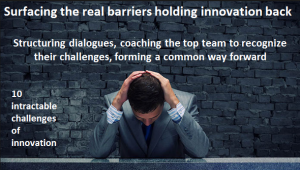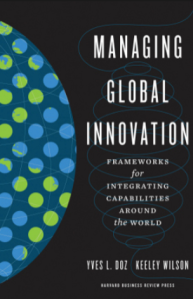![]() Here I am suggesting that there are ten intractable challenges that need breaking down and addressing to allow innovation to begin to really take hold
Here I am suggesting that there are ten intractable challenges that need breaking down and addressing to allow innovation to begin to really take hold
I’d suggest this might be a great starting point. Considering the intractable in anything is hard. To recognize these firstly is terrific, as they are tough to manage but phenomenal if you can surface them.
Then having the capability of knowing how to set about tackling these, drawing in a growing consensus that these are the real blocks to the team becoming truly innovative.
If you could ask a series of question that might help unlock innovation blockages it would make such a difference to our innovation performance and engagement. I think this might need a good external facilitator as my recommendation, one who has deep innovation knowledge and expertise, able to manage the ‘dynamics’ within the room.
These are shaped as discussions to raise, explore and extract views and then to be pulled together into a collective position, that gives strength and identification to resolving issues surrounding innovation. Surfacing differences, finding common ground and developing a ‘collective’ way forward makes a significant contribution to building a common language and a common sense of identity. It underpins innovation engagement. It gives confidence to any innovation undertaking.


